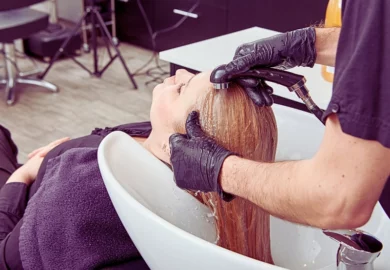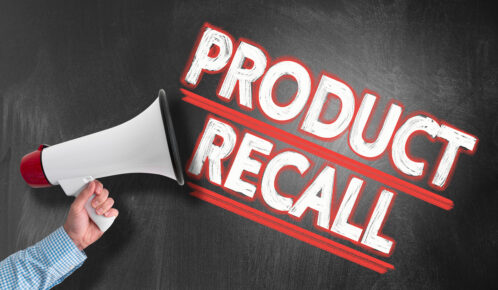The hair relaxer lawsuit has gained national attention as more women come forward with claims linking chemical hair straightening products to serious health issues. As litigation progresses, many people are wondering: When will the hair relaxer lawsuit be settled?
Table of Contents

The timeline for settling the hair relaxer lawsuit remains uncertain, as legal proceedings are still in the early stages. Factors such as discovery, bellwether trials, and corporate legal strategies will influence how quickly settlements may be reached.
For those affected by hair relaxers, staying informed and seeking legal guidance is crucial. As more evidence emerges and courts rule on key issues, the potential for settlements will become clearer. Until then, plaintiffs must be prepared for a legal process that may take time but could ultimately result in justice and financial compensation for those harmed by these products.
Contact Ankin Law for updates and to find out if you qualify to sue. Call 312-600-0000.
Multi-District Litigation (MDL) and Case Progression
The hair relaxer lawsuits have been consolidated into a multidistrict litigation (MDL) in the Northern District of Illinois. MDLs streamline pretrial proceedings for multiple lawsuits with similar claims, allowing for more efficient handling of discovery, motions, and other legal processes. The MDL process can be lengthy, but it is a crucial step in determining whether settlements or trials will follow.
As of now, attorneys are still in the early phases of litigation, gathering evidence, deposing witnesses, and reviewing internal company documents. These cases require extensive scientific and medical analysis to prove a direct connection between hair relaxer products and serious health conditions. The pace of the MDL will influence when settlements may occur.
Key Legal Arguments in the Lawsuit
Plaintiffs argue that major manufacturers of hair relaxers, including L’Oréal, Revlon, and Strength of Nature, knowingly sold products containing harmful chemicals such as phthalates and parabens. Studies, including one published by the National Institutes of Health (NIH), have linked frequent use of hair relaxers to an increased risk of hormone-related cancers. Plaintiffs in these cases allege that manufacturers failed to warn them about the risks, including an increased likelihood of developing uterine cancer, ovarian cancer, and other reproductive health problems, despite scientific evidence suggesting potential harm.
Defense attorneys, on the other hand, argue that there is no definitive proof linking hair relaxers to cancer and other reproductive health conditions. They may also claim that other lifestyle or genetic factors contribute to the illnesses reported by plaintiffs. The resolution of these legal arguments will play a significant role in determining the timeline for potential settlements.
What Factors Affect the Settlement Timeline?
Various factors affect the timeline of the hair relaxer lawsuit. These include, but are not limited to, the following.
The Length of Discovery and Pretrial Proceedings
Discovery is one of the most time-consuming phases of a lawsuit. Both sides must exchange evidence, conduct depositions, and analyze scientific studies related to the case. Because the hair relaxer lawsuit involves complex medical and scientific issues, this stage could take months or even years to complete.
Once discovery is finished, the court may allow early bellwether trials to proceed. Bellwether trials involve a few representative cases going to trial first, helping both sides gauge the strengths and weaknesses of their arguments. If plaintiffs win major verdicts in these trials, it could push manufacturers to settle remaining claims faster.
The Number of Claimants Involved
Mass tort cases, such as the hair relaxer lawsuit, often involve thousands of claimants. The more plaintiffs involved, the longer it may take to negotiate settlements, as each individual’s medical history and level of exposure to hair relaxers must be considered. A high volume of cases can lead to protracted settlement discussions or additional trials before a resolution is reached.
Corporate Strategies and Legal Maneuvers
Defendants in mass tort cases often attempt to delay proceedings in the hopes that plaintiffs will accept lower settlements. Companies may file motions to dismiss cases, challenge expert witness testimony, or push for procedural delays. If manufacturers choose to fight the lawsuits aggressively, it could extend the litigation timeline.
Conversely, if early trials result in large plaintiff verdicts, manufacturers may be more inclined to negotiate settlements to avoid further financial losses. Many companies in past mass tort cases have opted to settle when faced with strong evidence and high jury awards.
Possible Settlement or Trial Outcomes
While no settlements have been reached yet, attorneys speculate that hair relaxer lawsuits could result in substantial payouts for affected individuals. The final settlement amounts will depend on factors such as the severity of the plaintiffs’ illnesses, the strength of scientific evidence, and the ability to prove that manufacturers were aware of the risks but failed to act.
Settlements in similar cases, such as those involving talcum powder and ovarian cancer, have reached billions of dollars. If strong evidence emerges in the hair relaxer lawsuits, manufacturers may choose to settle rather than face the uncertainty of trial verdicts.
The Likelihood of a Global Settlement
In large-scale MDLs, courts often encourage global settlements, where defendants agree to compensate all claimants through a structured fund. A global settlement can provide compensation more quickly than individual trials, but negotiations can take years, especially when thousands of plaintiffs are involved.
If a global settlement is reached, individual payouts will likely vary based on the severity of each plaintiff’s injuries and their level of exposure to hair relaxers. Legal teams may use a tiered settlement system, where those with more severe health complications receive higher compensation amounts.
Individual Trials and Potential Verdicts
If no settlement is reached, plaintiffs may proceed to individual trials. In these cases, juries will determine whether specific plaintiffs should receive compensation based on the evidence presented. While this can lead to high verdicts, it also carries the risk of prolonged litigation for individuals waiting for their cases to be heard.
What Should Plaintiffs Expect Moving Forward?
Individuals who believe they have been harmed by hair relaxers should seek legal representation as soon as possible. A skilled attorney will evaluate the case to see if victims qualify, help gather medical records, establish product use history, and build a strong case for compensation. Many law firms handling these claims operate on a contingency fee basis, meaning clients do not pay legal fees unless they win compensation.
Monitoring Legal Developments
Plaintiffs and potential claimants should stay informed about updates in the hair relaxer lawsuits. Court rulings, bellwether trial outcomes, and settlement negotiations can significantly impact the timeline for resolution. Following news reports and consulting with legal professionals can help individuals understand their rights and options.
The Importance of Filing a Claim on Time
There are statutes of limitations that dictate how long individuals have to file a claim. These time limits vary by state. Missing these deadlines can result in the loss of legal rights to seek compensation.
If you suffered injuries that were caused by hair relaxer products, contact Ankin Law to schedule a free case evaluation. Call 312-600-0000.



